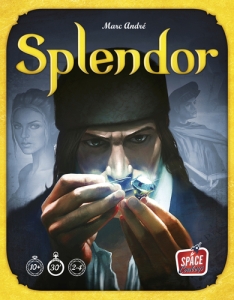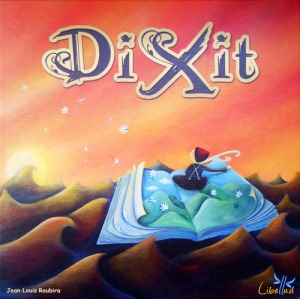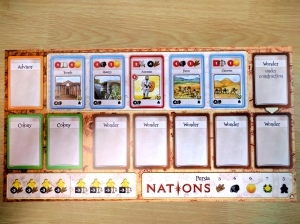I am one of those lucky enough to be married to the nicest person I know. While she might argue otherwise, my wife is among the very few people I know who is generous with what she has; whether it is time or attention. She has few interests and a chockfull of responsibilities. Meanwhile, I am into virtually everything in the pop culture genre and have a borderline psychotic addiction to games.
Now with a one-year old stamping around the house, which constantly amazes and terrifies us simultaneously, I came to the stark realization sacrifices needed to be made. Weekly gaming sessions turn into an infrequent luxury; frequent raids on online board game stores turn into a rare but no less intense begging and attempts to justify my purchases. That said, as one is responsible for one’s own sanity, my relentless battle for the chance to occasionally play my favorite games helps maintain a functional mental health to deal with uncertain but rewarding life as a new parent.
Although my wife’s gaming escapades in between the baby’s naps are mostly limited to gaming apps on her phone, the right timing combined with a tithe of shortcakes from a nearby bakery might persuade her to indulge me once in a blue moon. With this post, I would like to share the FIVE games out of my collection that she would actually ASK to play, along with a short description. I will most probably do more in-depth reviews of these games at a later date. Without further ado, here are the rarest of the gems, in no particular order.
★Splendor★
 In Splendor, players are gem traders vying to be the most savvy, wealthiest merchant in the business. The game is teachable in 5 minutes but offers deeply strategic decisions. Players use 5 types of gems they acquire during the game, represented by heavy-duty poker chips with beautifully illustrated precious stones, to purchase gem cards which in turn provide them with discounts when buying future cards. Smart planning to obtain help from influential townspeople and the use of gold chips as wild cards keep the game engaging without being too complicated. Playable in around 30 minutes, it is a great game for couples and families alike. Nominated for Spiel de Jahres and won the Golden Geek Game of the Year in 2014, it is perfect for casual and non-gamers alike.
In Splendor, players are gem traders vying to be the most savvy, wealthiest merchant in the business. The game is teachable in 5 minutes but offers deeply strategic decisions. Players use 5 types of gems they acquire during the game, represented by heavy-duty poker chips with beautifully illustrated precious stones, to purchase gem cards which in turn provide them with discounts when buying future cards. Smart planning to obtain help from influential townspeople and the use of gold chips as wild cards keep the game engaging without being too complicated. Playable in around 30 minutes, it is a great game for couples and families alike. Nominated for Spiel de Jahres and won the Golden Geek Game of the Year in 2014, it is perfect for casual and non-gamers alike.
★Dixit★

Dixit has become a staple when we have guests over. The most striking feature of the game is the oversized cards filled with lovely, fantastical images that can be interpreted a thousand ways. Each turn a designated storyteller sets a theme; which could be a sentence, poem, song or story; and place a card face-down on the table. Then the other players have to also each play a card from their hand which they think best matches the theme. After all the cards are shuffled and revealed, all players but the storyteller vote on which card is the storyteller’s card. You score points not only when you correctly guess which card, but also when other players vote on your card. A whimsical game for 3-6 players which demands creativity and promotes light-hearted fun. Won Spiel de Jahres in 2010, Dixit would also be suitable for children as young as 6 years old.
★Rhino Hero★

Haba is a company famous for its children’s games. But that does not mean adults cannot play them and have tremendous fun while at it. In Rhino Hero, players have to take turns constructing a building with cards as its walls and floors, which gets shakier as it gets taller. The floor cards have effects that require players to skip turns, change play directions or draw additional cards, not unlike Uno. Alas, the mighty Super Rhino in his excitement to save the world often forgets his own weight. One card effect requires players to place a wooden Super Rhino token on one of the floor cards, further increasing the possibility of toppling the building. A nail-biting game for 2-5 players which won the 2012 Spiel de Jahres Kinderspiel Recommendation and nominated for the Golden Geek Best Children’s Board Game in 2014.
★Goblins Drool, Fairies Rule!★

I love rhymes. A game involving rhymes? Not so much, because I know I would be terrible at it. However Goblins Drool, Fairies Rule! is such a simple children game anyone can enjoy it. The game comes with two-sided cards, Goblins on one side and Fairies on the other. Each card has a short rhyme on it related to the image on it. The goal of the game is for players to get rid of their Goblin cards or obtaining 6 Fairy cards. They do so by playing a card onto the common pool on their turn. Consequently, all the cards already in the pool with matching symbol (Sun, Moon, Mushroom, or Frog) will be flipped, revealing their opposite sides. The turn player then takes all the cards with matching rhymes onto their play area. Once a player reaches one of the goals, the game ends and he or she wins. Nominated for Golden Geek Best Children’s Game twice in a row, it is a great choice to teach children phonetics and rhyme.
★Above and Below★

The only game that actually comes with a board on this list. Players are villagers looking to settle in a new haven after their last villages were ransacked by barbarians. You finally found one, but need to brave countless dangers and encounter fantastic creatures to rebuild your settlement both above and below ground. The game comes with a book of encounters which the player on your right read on your turn, narrating the events you have to face during your explorations. A combination of choose-your-own adventure RPGs and a worker placement game, Above and Below offers a meaty, strategical fantasy adventure with lots of interesting choices to be made. Nominated for Golden Geek Award in 5 categories and the Meeples’ Choice Award, it is apparent Above and Below would be a hit with gamers throughout the spectrum.
And there we have it. Let me know your thoughts in the comments, or even make your own recommendations for games suitable to play with your non-gaming spouses. Until next time, keep on gaming.







